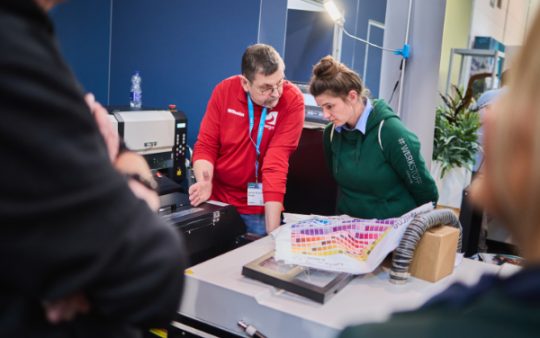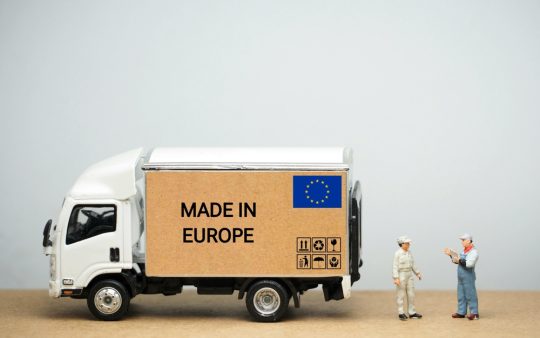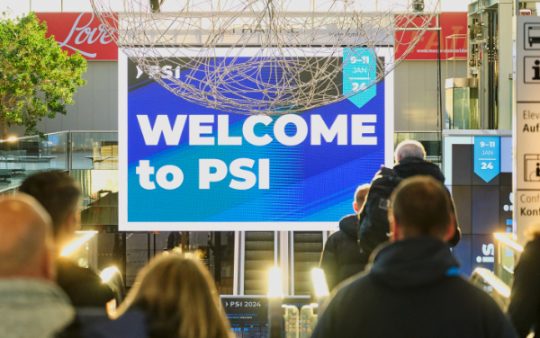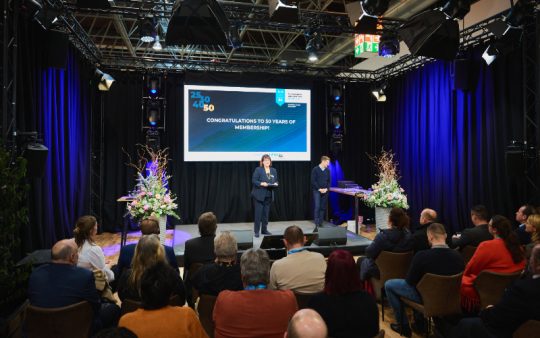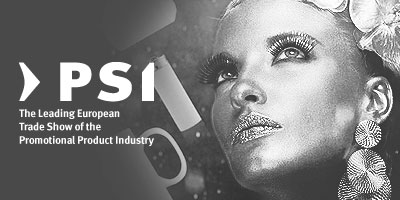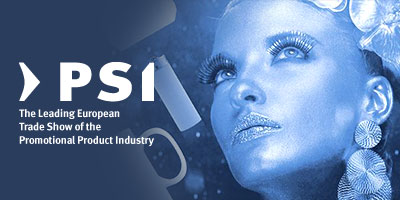We can do without microplastics

Published on 23.11.2023
Glitter and microbeads already prohibited
It is well known that microplastics are harmful to humans and the ecosystem, even if not all of the effects have been researched. Precautionary restrictions on these potentially hazardous substances therefore make sense. As a first step, the ban on loose glitter and microbeads came into force on 17 October.
It is hard to imagine the world of consumers, industry and the promotional product sector without plastics. They make our lives easier, safer and more colourful in many ways, and are often lighter and cheaper than other materials. However, if they are not properly disposed of or recycled, they can end up in the environment, where they remain for centuries, breaking down into smaller and smaller particles. As a rule, plastic particles measuring less than 5 millimetres are called microplastics. These fall within the scope of the current restrictions of REACH. Plastic-coated particles of this size, as well as fibrous particles with a length of up to 15 millimetres are also defined as microplastics. These particles have been the subject of controversial discussions for several years as potentially hazardous substances. To help companies assess the significance of the current restrictions (Restriction Entry no. 78 in Annex XVII of the REACH Regulations) for the sector, we are providing some basic information on the subject of microplastics.
What is covered by the restriction?
- The granular material used on artificial sports surfaces, the largest source of intentionally used microplastics in the environment.
- Cosmetics in which microplastics are used for a variety of purposes, e.g. for skin exfoliation (microbeads) or to achieve a specific texture, fragrance or colour; glitter particles in decorative cosmetics.
- Detergents, plasticisers, glitter, fertilisers, pesticides, toys, medicines and medical products.
- Products used on industrial sites or which do not release microplastics during use are exempt from the sales ban. However, manufacturers must provide instructions on how to use and dispose of the product.
- The ban on loose glitter and microbeads was one of the first measures to come into force on 17 October.
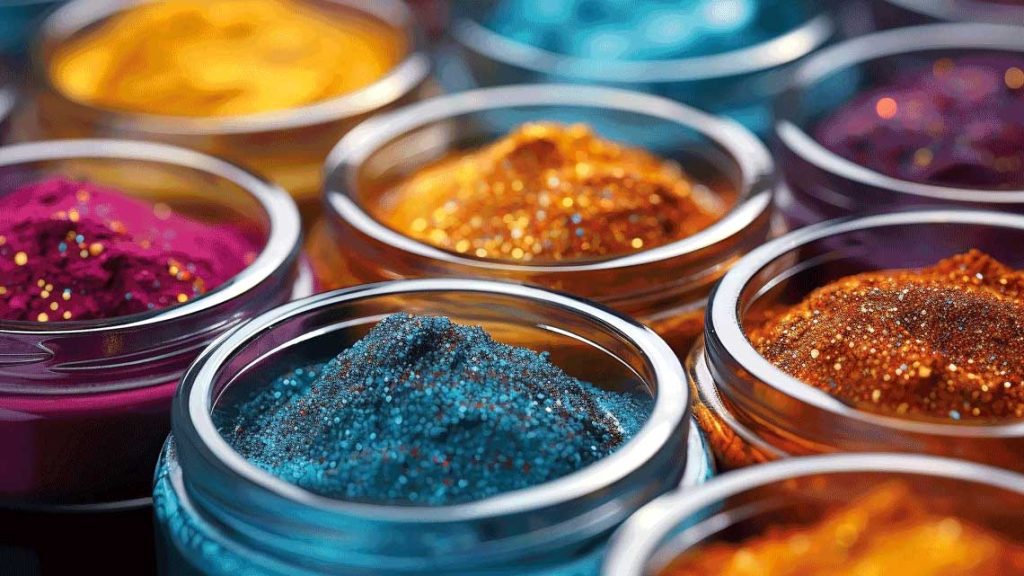
Glitter also falls under the ban – but thanks to degradable, microplastic-free organic glitter, there are still “shiny” possibilities and great promotional and decorative items with a glittery effect. Photo: Adobe Stock, cwa
Primary microplastics are added
A basic distinction is made between primary and secondary microplastics. The term primary microplastics refers to particles that are produced intentionally. They are then further processed or added to products in order to fulfil a specific function. Microplastics are deliberately used, for example, in agriculture and horticulture, as abrasive particles in facial and body scrubs, in cosmetics, detergents and cleaning agents, paints and varnishes, in-vitro diagnostics, medical products, human and veterinary medicines, food additives and in the oil and gas industry. They are used as fillers, binders, film formers, abrasive particles, carriers, stabilisers, filters, opacifiers, for the targeted release of active ingredients, for the encapsulation of fragrances, as anti-foaming agents or as blasting agents for industrial surface treatment. There are also microplastics that are used directly in their particle form, for example as infill material for artificial turf pitches. One example of further processing is the use of thermoplastic pellets in the manufacture of films or moulded components. The annual amount of primary microplastics used in the EU is estimated at around 145,000 tonnes. This information from the European Chemicals Agency ECHA alone makes it clear that microplastics are produced on a large scale and used in many areas where they fulfil certain functions. In the EU, a comprehensive ban on intentionally added microplastic particles was adopted this year as part of the REACH chemicals regulation. Secondary microplastics are not covered by the current restriction. Nonetheless, here are a few facts to help differentiate.
Secondary microplastics are produced during decomposition
Secondary microplastics are not produced industrially, but are created through the physical, biological and chemical decomposition of larger plastic parts or particles, for example through tyre abrasion, fibre abrasion in private households (for example when washing synthetic textiles) and during the weathering of geotextiles (films, fleeces and building materials in civil engineering, waterways, traffic routes or horticulture). Anyone talking about microplastics in general is more likely to be referring to the final stage of weathering of carelessly discarded plastic items and PET bottles, i.e. the particles that remain when plastic waste decomposes. However, the fact that (primary) microplastics are also intentionally released into the environment is less well known.
Restriction as part of the EU plastics strategy
It is therefore understandable that the EU’s restrictions are initially aimed at areas where the environmental impact can be reduced comparatively easily by avoiding primary microplastics. Eliminating intentionally added microplastics eliminates their entering ecosystems or bodies. As a first step, the EU Commission has therefore adopted measures that prohibit the sale of microplastics as such, as well as products to which microplastics have been deliberately added and which release these particles during use. Based on the scientific findings presented by the European Chemicals Agency (ECHA), the EU Commission drew up a restriction proposal within the framework of the European Chemicals Regulation (REACH). This was approved by the EU member states. Before being adopted, it was successfully scrutinised by the European Parliament and the Council. However, the ban will take effect gradually for the various applications in order to give manufacturers sufficient time to develop alternatives and switch production. The transitional period is up to twelve years, i.e. until 2035.
First bans since October
The adopted restriction is based on a broad definition of microplastics: It includes all synthetic polymer particles under 5 millimetres that are organic, insoluble and difficult to break down. The aim is to reduce emissions of intentionally used microplastics from as many products as possible. The microplastics restriction is part of the EU plastics strategy. Our overview shows some examples of common products that fall under this restriction.
Relevance for the sector
To what extent is the promotional product industry affected by this ban? Current examples include any microfibre particles that glitter colourfully on decorative and hobby articles, on Christmas decorations or paper products. Anyone selling products for events, parties, dance sports, carnival, or similar occasions will also have to check whether any banned particles are included and then rethink accordingly. Glitter particles on and in many costumes and accessories ensure a glamorous appearance and a great show. Children love it colourful and glittery, which is why there are traditionally many toys on the market with sparkling surfaces sprinkled with glitter dust. What is already there may be resold, but nothing of this kind may be placed on the market for the first time. A huge area using microplastic additives is the cosmetics industry. Here it is important to check the formulations and demand credible and meaningful certificates from producers. In any case, particularly strict rules apply to cosmetics and personal care products, which is why absolute conformity must be ensured in this area in particular.
First ban sends a clear signal
The first stage of the ban on microplastics is receiving mixed judgement. Compared to secondary microplastics (see above), which are mainly caused by abrasion from synthetic fibres and tyres, the amount of deliberately added microplastics is relatively small, meaning that the effects of the ban are manageable. It is therefore more important to promote recycling and generally produce less plastic waste, which may then decompose in nature. Nevertheless, the current ban is considered to send a clear signal, as cosmetic products that everyone needs and uses are attracting a lot of attention. The fact that effective, natural alternatives such as sand and minerals, as well as ground shells and seeds, can be used here is an important message that raises awareness of ecological issues. In practice, the ban has already led to a drop in the price of glitter products, which are used in nail design and make-up, for example. Here, too, there are already substitutes in the form of “organic glitter”, which does not contain any microplastics but is more expensive. A new market is opening up, and further alternatives are sure to be developed in the near future. The promotional product industry has also shown that it is inventive and adapts to the circumstances. Keywords here are recycled, recyclable and even compostable plastics (see also page 82ff), the use of “apple leather”, recycled paper, cork, wool felt, cellulose and many other sustainable materials.
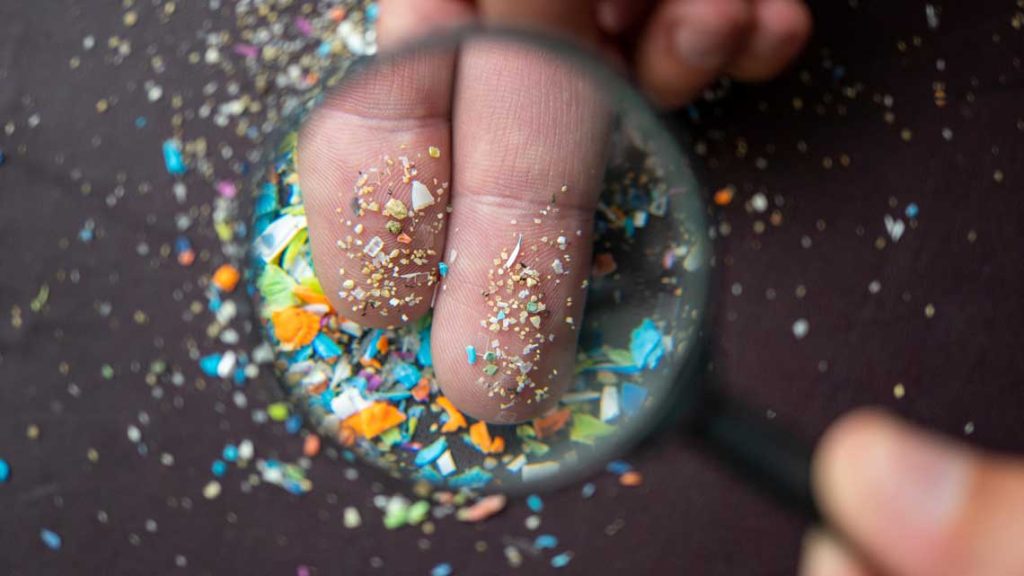
Primary microplastics are added to a variety of products in many different formulations to give them certain properties. Photo: Adobe Stock, SIV-Stock-Studio

“Goods that are still outside the EU can no longer be placed on the market.”
Lutz Gathmann, Designer and Safety Technician
The ban on loose glitter has been in force since 17 October 2023. “Loose glitter” is anything that detaches or can detach during the handling of a product, such as Christmas cards, Christmas tree baubles, New Year’s Eve rockets, costumes, confetti and the like. Goods that have already been imported into the EU and cleared through customs by this date (17 October) can still be sold. Anything that is still outside the EU, for example in shipping containers, can no longer legally be landed and placed on the market. This is just another example of the many new regulations and bans that companies are facing. I can only advise you to keep up to date so that you can react in good time.
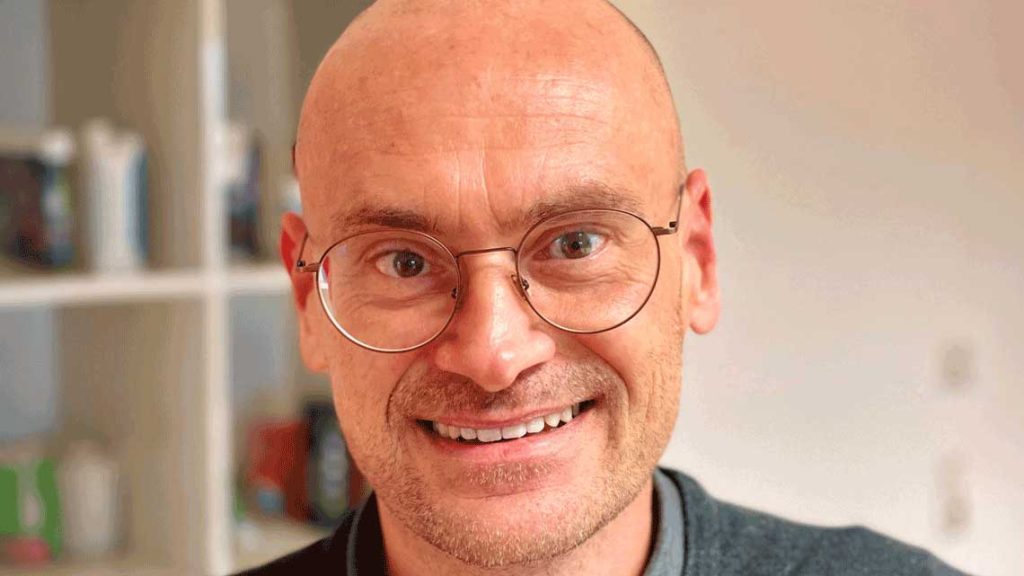
“Microplastics are a huge issue in the cosmetic industry.”
Stefan Fleischmann, Sanders Imagetools
Microplastics have long been a huge issue in the cosmetics industry. This is because they are found in many formulations, not only in the form of the now banned microbeads, but also in liquid form. We followed developments closely and were therefore quick to ensure that all our products are microplastic-free. For example, we have been using ground walnut shells in our hand-wash paste, and these fulfil the same function. The cosmetics sector is very sensitive and imported products run a high risk of containing substances that are banned in the EU – especially as the documents are often not conclusive. Experienced producers with the necessary expertise are always the best choice. From my own experience, I can only recommend preparing for new regulations in the long term. This is time-consuming, but feasible, as legislative procedures usually have a long lead time and there are always transitional phases. We are also not afraid of the upcoming EU legislation on “greenwashing”, as we have always kept our communication on the topics of sustainability, recycling and responsibility open and transparent and have refrained from using euphemistic or misleading claims. We very much welcome this offensive by the EU and hope that it will ultimately lead to a deeper understanding among retailers and consumers of this extremely complex issue.

“Bio glitter is plastic-free, environmentally friendly and biodegradable.”
Mona Handke, LOOP GmbH & Co. KG
The glitter in our LOOP Shop is free from micro plastic – which means it can continue to be sold. Normally, glitter is produced out of small particles of plastic, a layer of aluminium, and often eco-hazardous dyes. Glitter gets into our environment extremely quickly: when you wash plastic glitter off your face using soap and water, it gets into the wastewater and subsequently the groundwater. Water treatment works are ineffective at filtering out microplastic. At open-air events, too, the plastic particles drop to the ground unnoticed, are blown away and thus pollute our environment. By contrast, the glitter in the Loop Shop is 100 percent plastic-free, environmentally friendly, and biodegradable – and still exactly as pretty! For the bio glitter made in Germany, three natural biodegradable materials are used: cellulose, minerals, and shellac. We sell the glitter as a promotional product, for instance in the form of printable business cards made out of grass paper with a sachet of bio glitter attached – and those are total eye-catchers and ice-breakers for any first-time meeting. We also offer cork-lidded jars filled with glitter, which can be finished with a customised grass paper label. Unbelievably, glitter is still one of our underestimated promotional items – yet it is able to convey so many ideas and messages and, what is more, it guarantees a good feeling that generates lots of attention. Glitter is ideal as a promotional item at festivals, for example, but also at many other events or promotional campaigns. One thing is vital, in my view: the promotional industry should take care that microplastic-free glitter products are also sustainable in other respects. In this context, a crucial role is played by the origin of its ingredients, the material used for its packaging, and its biodegradability, for example.
Effects of microplastics on the environment and health
- Microplastics can enter the food chain when animals ingest them.
- Microplastics are very resistant and do not biodegrade. Once released, the particles remain permanently in the environment: According to current knowledge, microplastics can not be removed from the environment.
- Microplastics can therefore accumulate in water and soil and have long-term effects on ecosystems.
- Over time, microplastics break down into smaller and smaller particles, which tend to be even more dangerous as they are more easily ingested by animals.
- There is evidence that microplastics can cause inflammation in the body and damage cells and tissue.
- Chemicals can adhere to microplastic particles and, in this way, toxic substances can enter the body.
This article was published in the December issue of the PSI Journal.
Picture credits lead photo: Adobe Stock, Abzal

